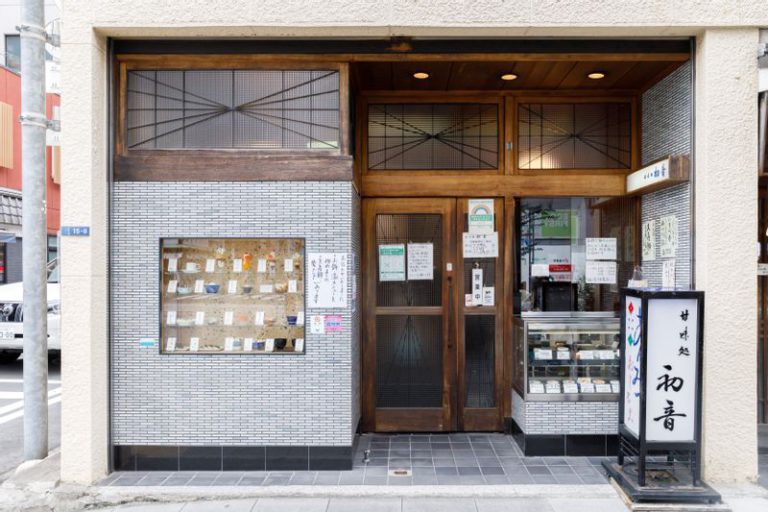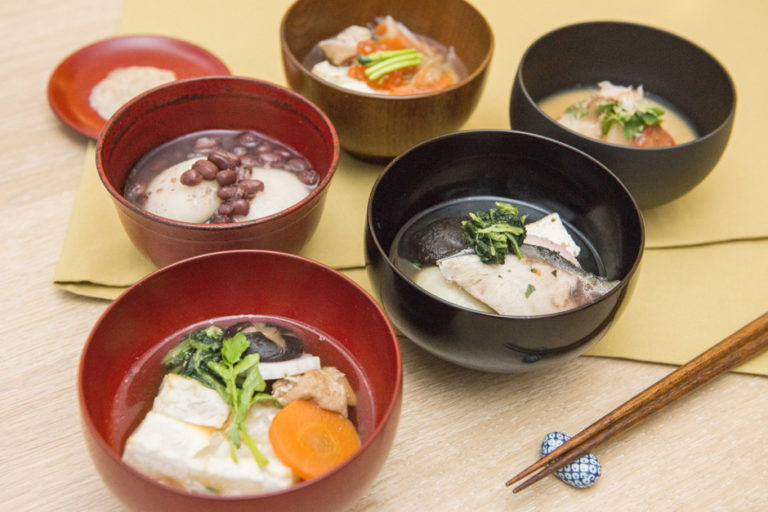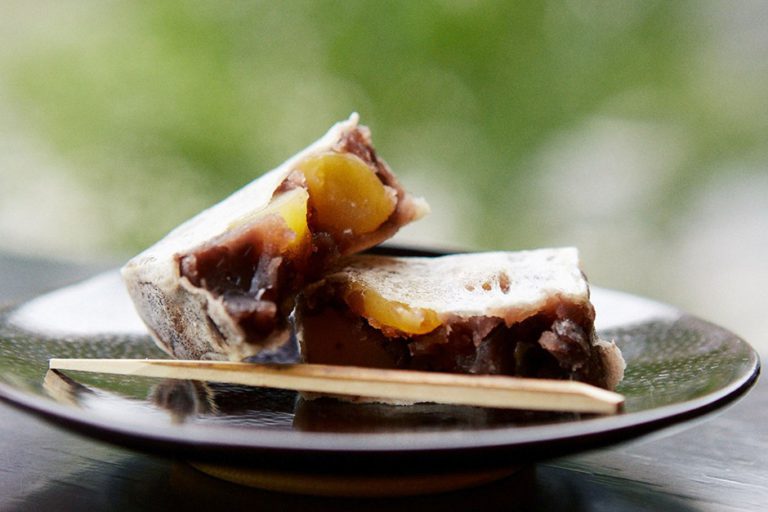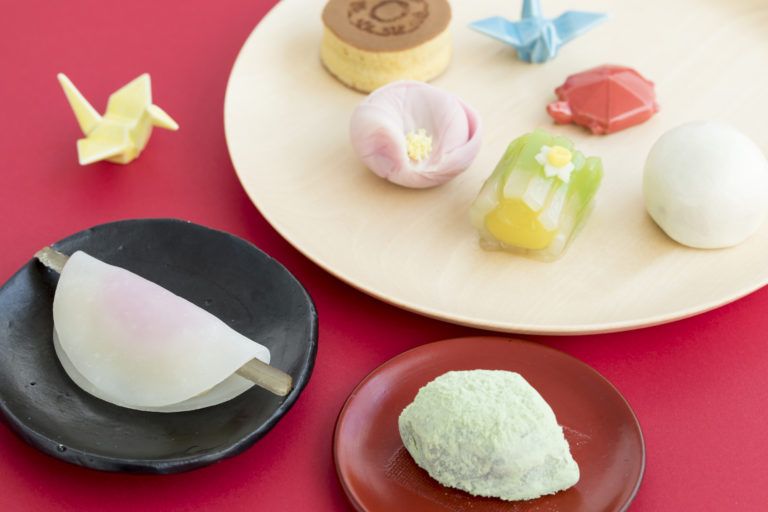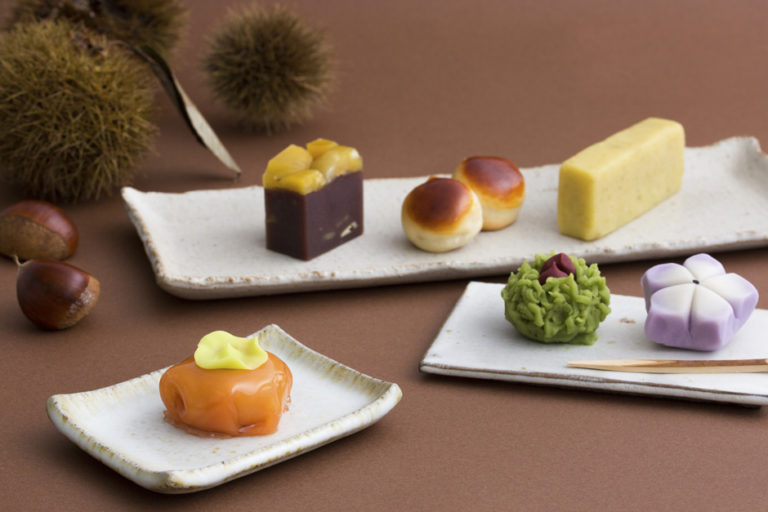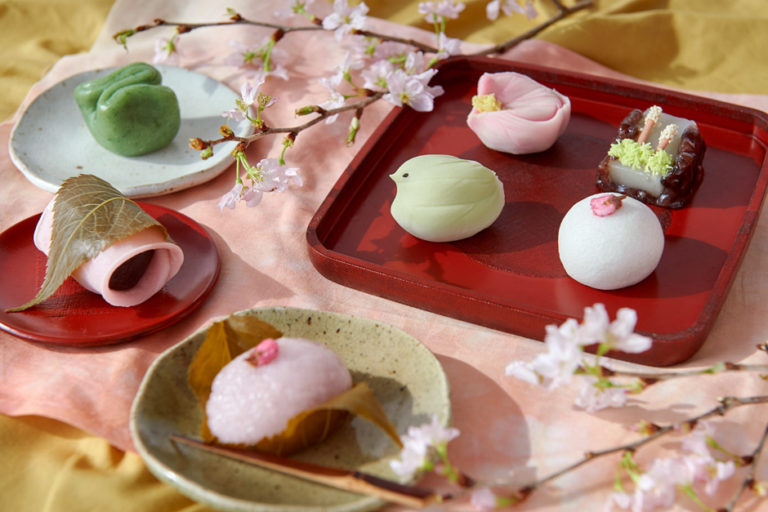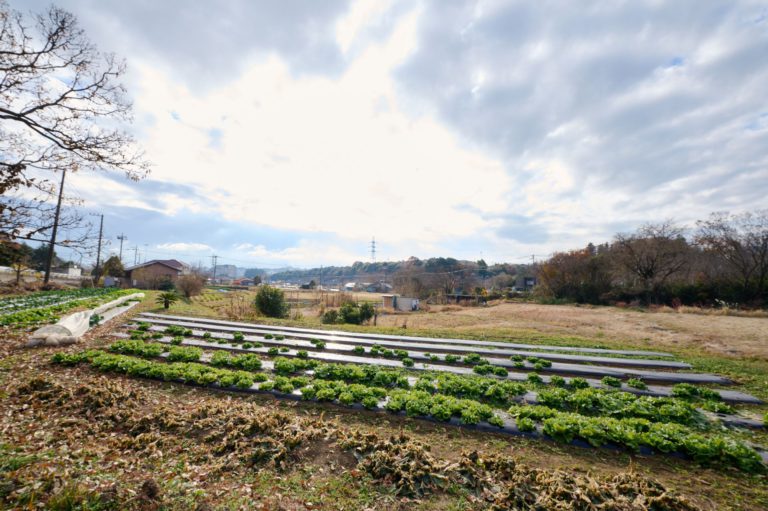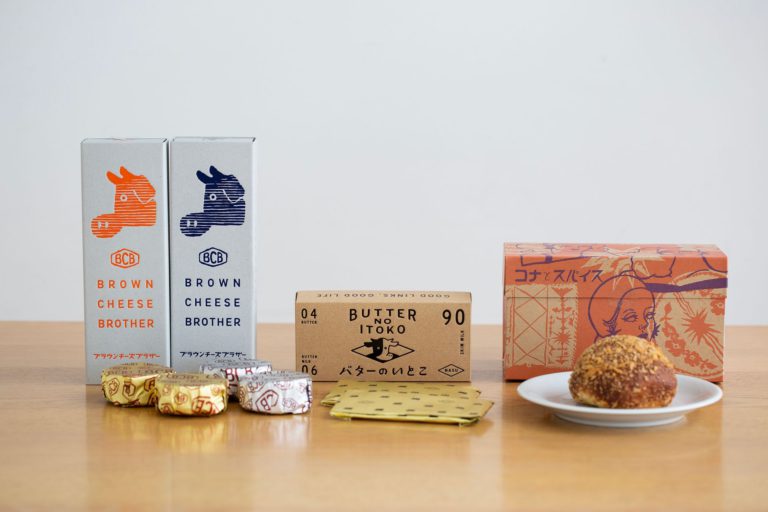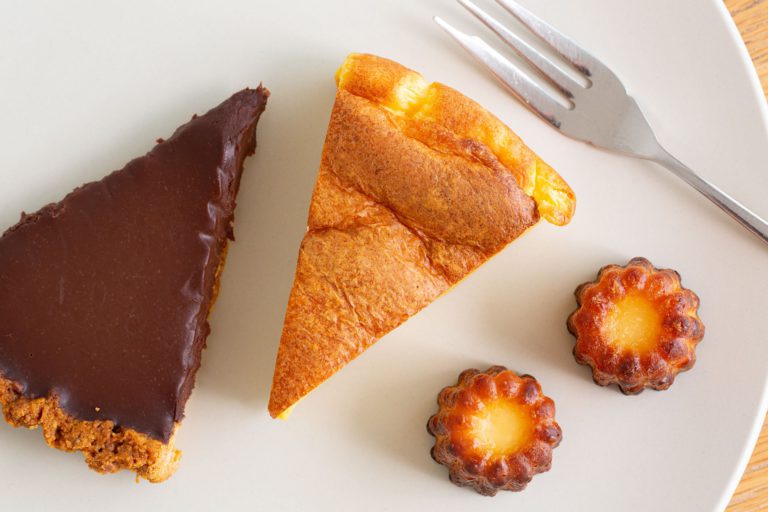For Winter When the Cold Intensifies Warm Up with Shiruko and Zenzai at Tokyo’s Oldest Traditional Dessert Parlor
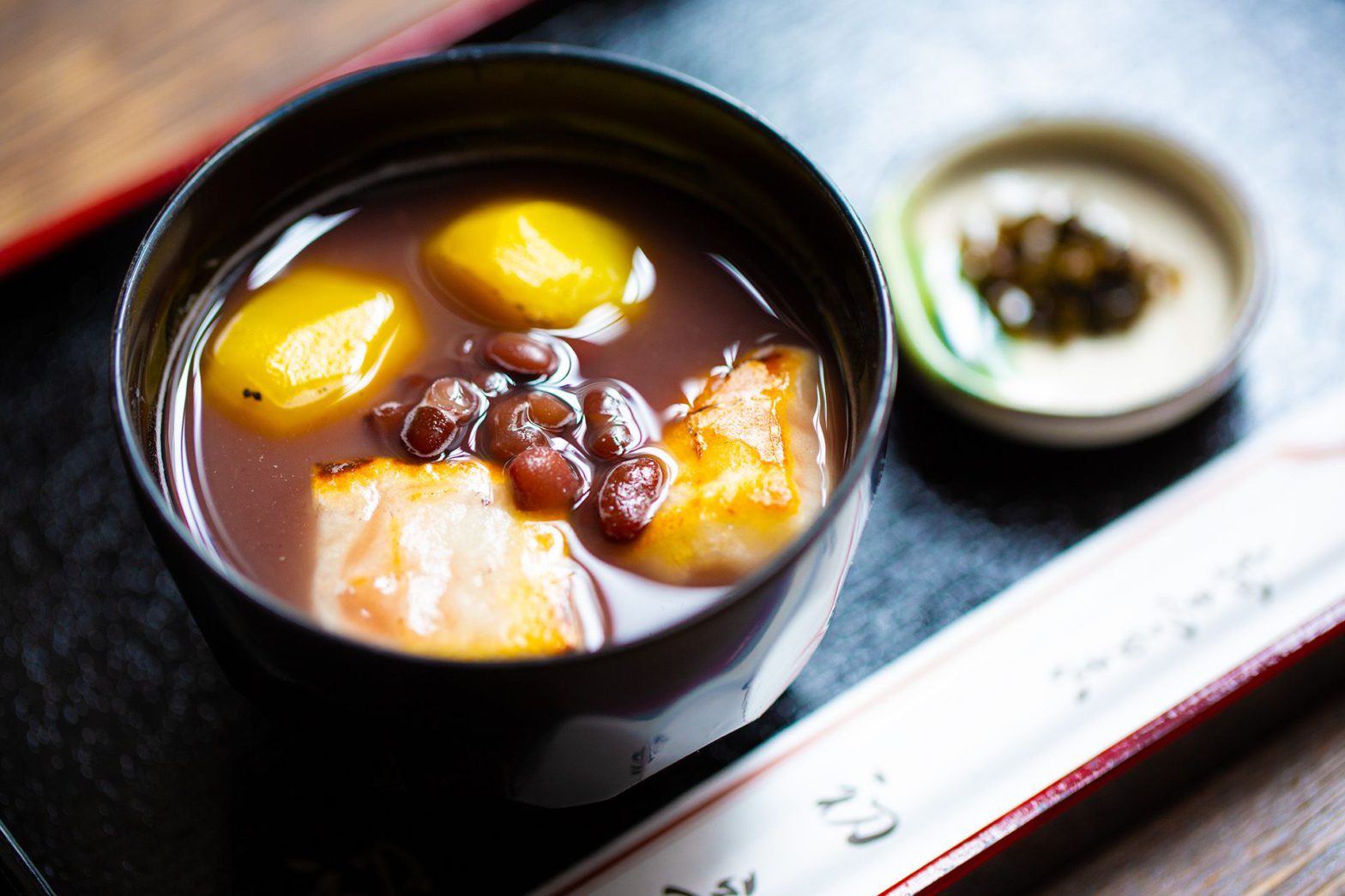
The words Oshiruko and zenzai mean different things in Kanto and Kansai
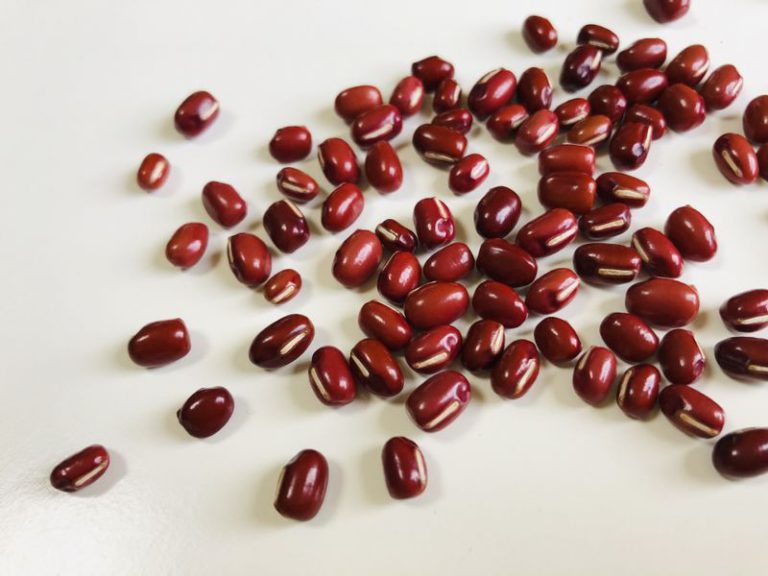
Shiruko and zenzai are made with sweet adzuki paste as the main ingredient. The adzuki beans used are high in nutritional value, and their red color has long been appreciated as a bringer of good luck against evil spirits. The Japanese have long eaten adzuki beans in dishes such as sekihan, ohagi and adzuki porridge to wish for good health during annual events, but it was not until the Edo period, when sugar became widely available, that people began to eat sweetened adzuki beans.
Shiruko, too, was originally a term for an ingredient in soup. In the late Edo period, an-shiruko-mochi, a sweet adzuki paste soup with shiratama and mochi, became popular among the masses. It is said that the name was abbreviated to (o)shiruko.
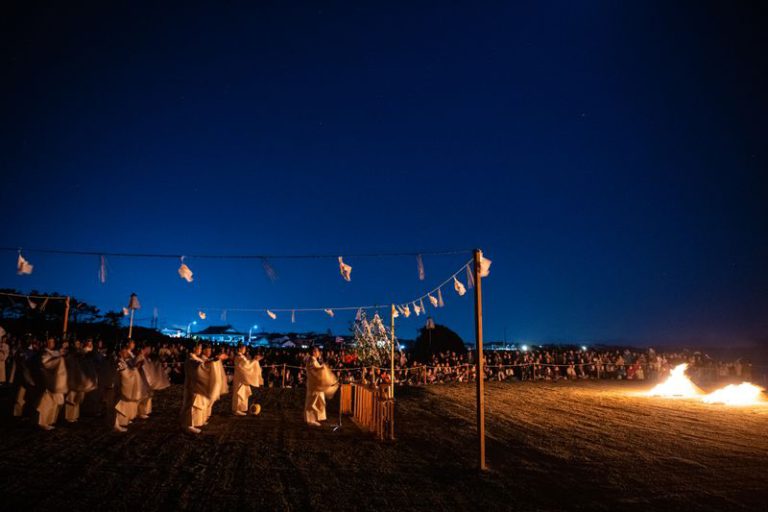
Photo credit: Izumo Taisha Shrine
There are two major theories as to the origin of zenzai. One is that it comes from the jinzai mochi of the Izumo region. In the Izumo region, a festival called Jinzaisai is held in October of the lunar calendar, and jinzai mochi is served at the celebration. It is said that the word jinzai changed to zunzai and then to zenzai. Another theory is that it derives from the Buddhist term zenzai. Zenzai is also read as yokikana, a word meaning splendid. According to tradition, a monk who once tasted the high-class wagashi was so impressed by its taste that he exclaimed, “Zenzai (very tasty)!” thus giving the wagashi its name.
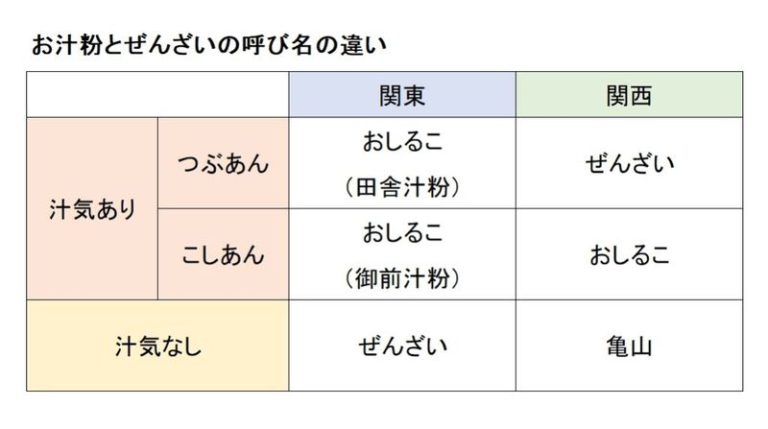
It should also be noted that oshiruko and zenzai are different in the Kanto and Kansai regions. In Kansai, zenzai is made with soupy and chunky adzuki paste. Oshiruko is a soupy mixture of smooth adzuki paste. In Kanto, on the other hand, if it is soupy, it is called oshiruko. If it is made with chunky adzuki paste, it is called inakashiruko or ogurashiruko, and if it is made with smooth adzuki paste, it is called gozenshiruko. Meanwhile, zenzai is without any soupiness.
Adzuki paste dishes at Hatsune in Ningyocho, Kanto's long-established shop
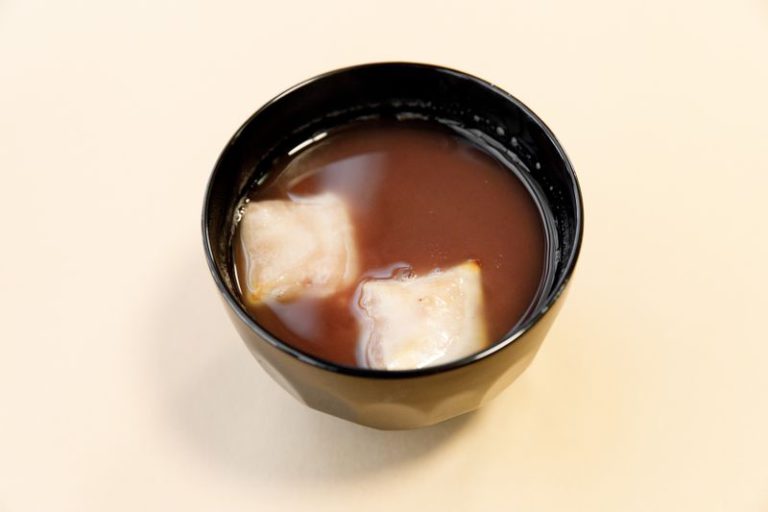
●Gozenshiruko (soupy/smooth adzuki paste)
It is made from cooked adzuki beans that have had their skins removed by puréeing and then kneaded into a smooth paste with sugar. The beautiful adzuki red-colored liquid warms us up when we are cold.
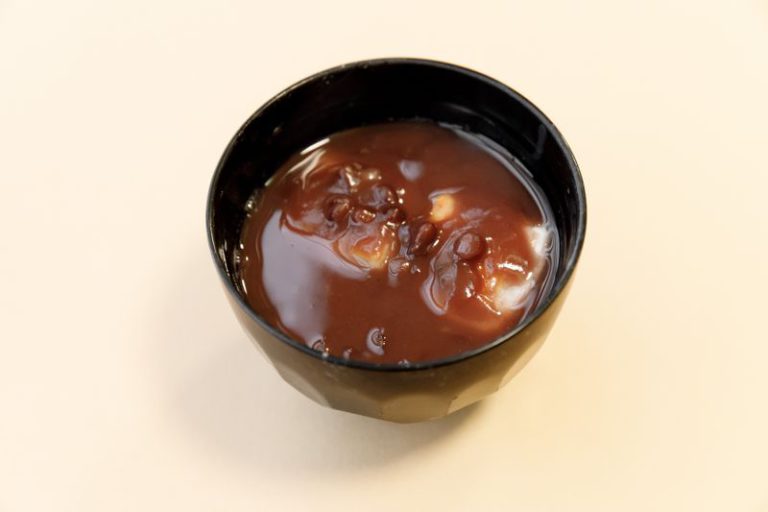
●Ogurashiruko (soupy/smooth adzuki paste with cooked adzuki)
The adzuki beans are cooked without crushing, intensifying their umami and bitterness. A little bit of salt is added as a secret ingredient to enhance the overall flavor.
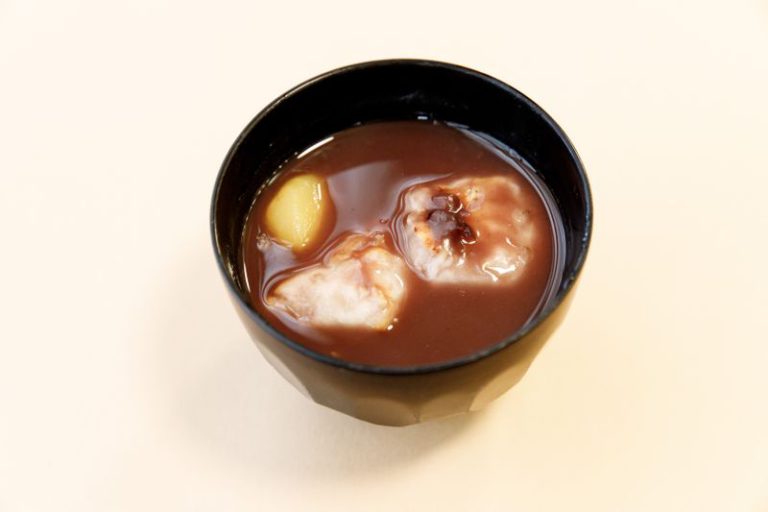
●Kuri ogurashiruko (soupy/smooth adzuki paste with cooked adzuki and candied chestnuts)
The shop’s most popular seasonal ogurashiruko is the kuri ogurashiruko, topped with chestnuts. It is served from October to February every year.
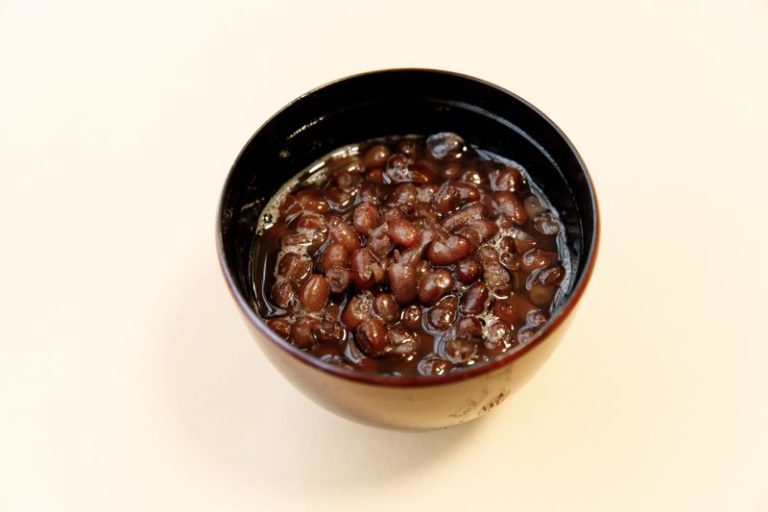
●Cooked adzuki
This dish is made by carefully simmering hand-selected premium-grade adzuki beans, boiling them over to remove unpleasant flavors. The beans are large, and their flaky texture and flavor can be enjoyed in abundance. It is moderately sweet and light.
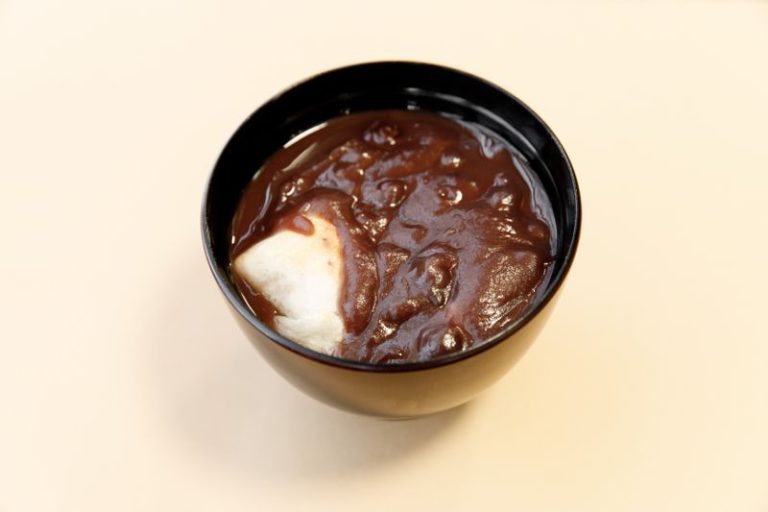
●Zenzai (no soup/smooth adzuki paste with cooked adzuki)
A small amount of cooked adzuki is added to the smooth adzuki paste, allowing you to enjoy the delights of anko. The salt-cured shiso served as a palate cleanser pairs well with the dish.
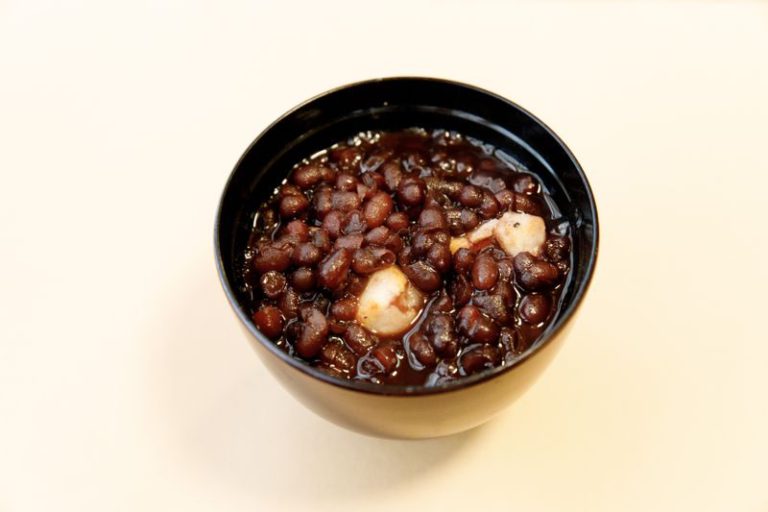
●Ogurazenzai (no soup/chunky adzuki paste)
The dish contains plenty of glistening, chunky adzuki anko and flaky adzuki beans. The pairing with the elastic square mochi is exquisite.
Tokyo's oldest delicacies since the Edo period
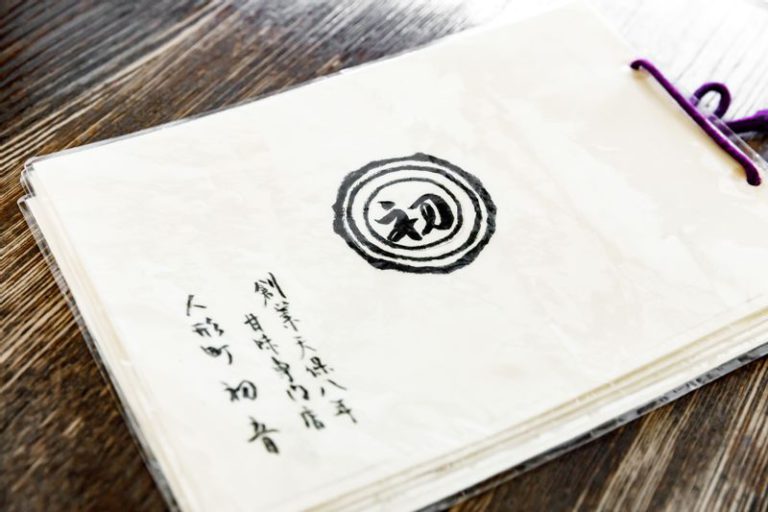
Hatsune was established in 1837. It is the oldest traditional dessert parlor in Tokyo and has been operating on the same premises in Nihonbashi Ningyocho since its establishment.
The proprietor says, “It wasn’t until the late Edo period that commoners could eat anko. Tradition has it that the original store was set up as a resting place for worshippers at the nearby Suitengu Shrine and that it first sold steamed sweet potatoes and other items and later became a shiruko shop. The sweet oshiruko must have been the most luxurious thing for ordinary folks. I’ve heard it was a very popular treat for visitors to the shrine.”
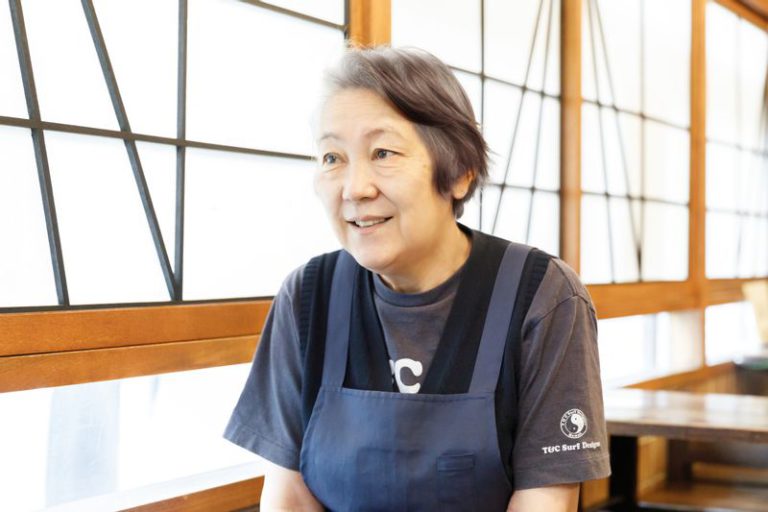
Says Miyuki Ishiyama, the seventh successor of the shop. Old black-and-white photos preserved in the shop offer a glimpse of its long history.
“In a photo taken in the late Taisho period (1912–1926), possibly after the Great Kanto Earthquake, you can see strips of paper written oshiruko and soda water. Our menu probably hasn’t changed much from those days. Although we were closed during World War II, when sugar wasn’t available, we reopened for business here two years after the war ended,” says Ishiyama.
The wooden building was replaced by a reinforced concrete building when the shop was temporarily evicted following the opening of the Hibiya Line in 1961, but you get a sense of the old days once you enter inside.
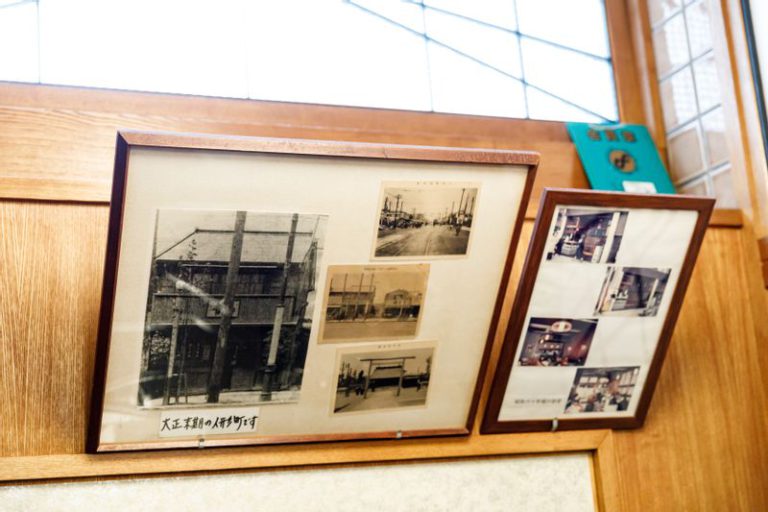
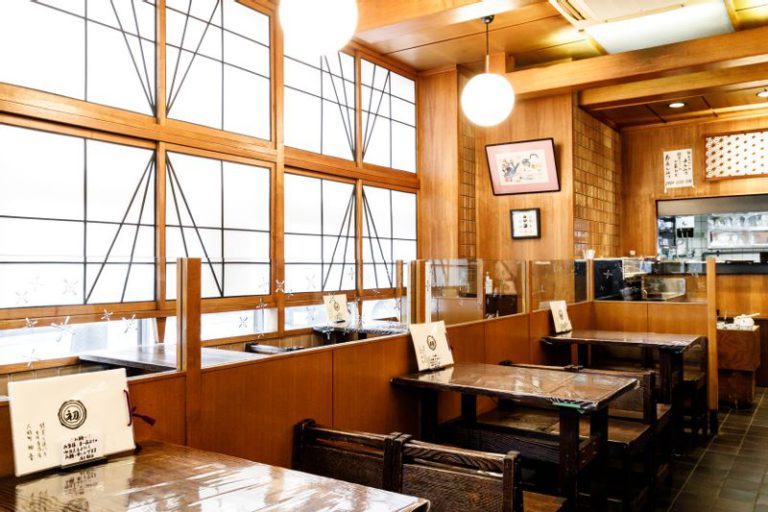
She continues, “The shop’s name, Hatsune, comes from Hatsune no Tsuzumi in the Kabuki play Yoshitsune Senbon Zakura (Yoshitsune and the Thousand Cherry Trees), written by the theater-loving founder of Hatsune. The shop’s front door and shoji windows are decorated with drum hide and hemp cord (shirabeo) motifs. The motifs are also printed on the wrapping paper for take-out, all created by my late father (the fifth successor), who excelled at commercial design. We’ve also reused the wall panels from the old shop. We use what we can keep with great care. Perhaps the old-fashioned matches and the like are valuable today.”
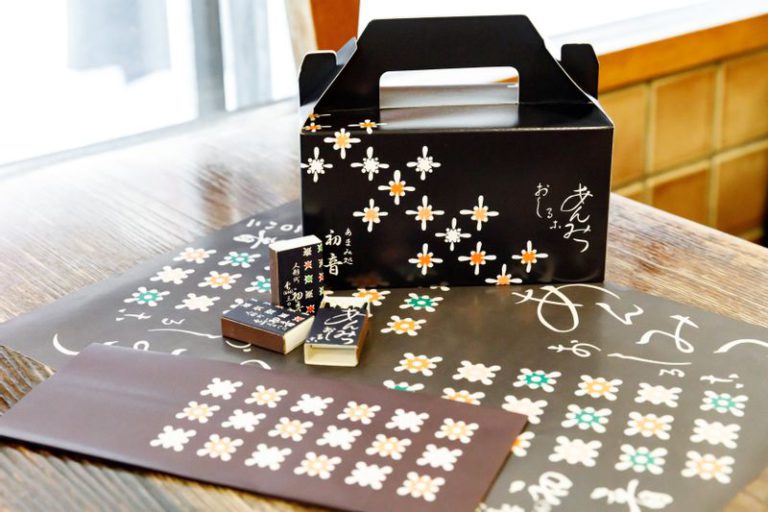
The artisans in the kitchen preserve and pass on the shop’s flavor.
“We source Grade A adzuki beans from Tokachi for our oshiruko and zenzai. When cooked, their uniform size, beautiful shape, luster, color, and aroma are outstanding. Each 30 kg of adzuki beans is slowly simmered in a large kettle while removing the scum, and then the anko is kneaded while mixing in caster sugar. The finished anko is rested for a few days to let the flavor mellow. My younger brother has learned this process from the artisans who have been with us since the previous successor, and he has carefully preserved the flavor. Another trait of ours (Hatsune’s) is that we sweeten our anko well. A traditional dessert parlor’s role is to bring smiles to people’s faces with sweetness,” says the proprietor.
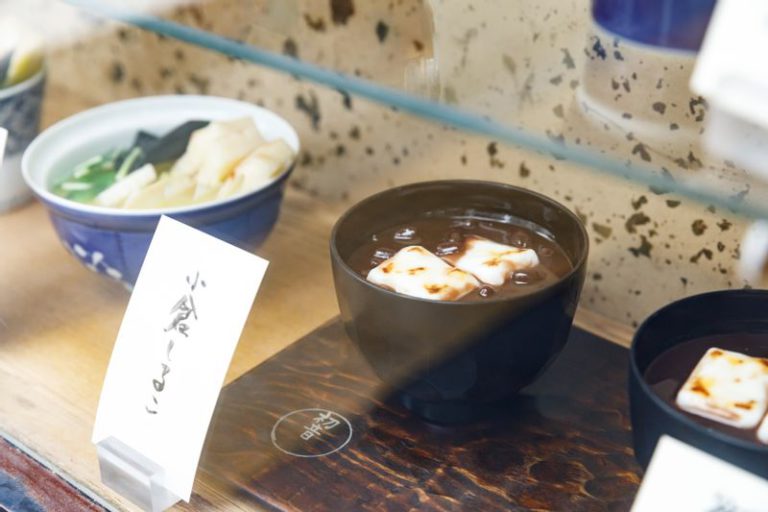
The new crop of adzuki beans becomes available from November to December, and they are said to be the tastiest to cook. However, the artisan’s skill lies in maintaining the consistency of adzuki beans’ taste while paying attention to the amount of water and cooking time, as adzuki beans’ water content varies depending on the season and the year’s harvest. Oshiruko and zenzai offer a luxurious taste of anko, made with ingredients and sweetness particular to each shop. We hope you will enjoy comparing the various kinds of anko, which vary because of its simplicity.

